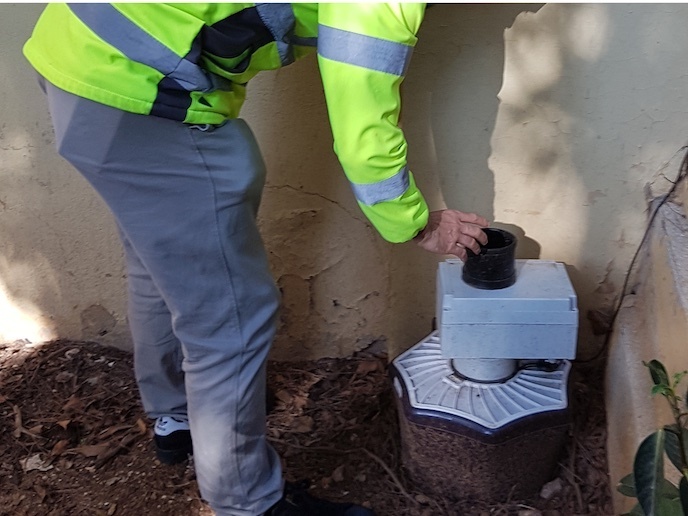Sensors key in the fight against mosquitoes carrying West Nile fever
West Nile virus was first reported as circulating in Europe in the 1960s, and it has increased considerably in prevalence and spread all over Europe since then. According to the European Centre for Disease Prevention and Control (ECDC), as of 30 June 2023, the European Union (EU), European Economic Area (EEA) and EU-neighbouring countries have reported 1 340 people infected locally by West Nile virus, resulting in 104 deaths, in 2022. This is the highest reported number of locally acquired cases since the peak epidemic year, 2018. The ECDC Annual Epidemiological Report for 2021 indicated a total number of 4 856 malaria cases and 428 dengue cases reported in the EU/EEA. The majority of cases were travel-related, but some were reported as acquired in the EU. “The fact that endemic cases of malaria and dengue are being detected in the EU, associated with climate change that favours the ongoing colonisation of mosquitoes in EU countries, is a serious indicator that the number of cases will unfortunately increase in the future,” says João Encarnação, coordinator of the VECTRACK project. The project was hosted by Irideon a Spanish internet of things company. The accurate and timely monitoring and control of dangerous mosquito species is the key to preventing, and ultimately stopping, an outbreak. “Current monitoring methods rely entirely on manual work, which is very laborious, slow and expensive. These factors explain why, in the 21st century, mosquitoes are responsible for over 1 million deaths each year,” he notes.
Real-time data on mosquito populations
To bring technology to bear on the problem, VECTRACK developed an alternative to manual trap inspections. Traps, the current approach to monitoring, require technicians to collect the sample, which is taken to a lab for processing. If the lab is busy this can take days. In some cases this can mean that results come in 15 or 20 days after sample collection. As Encarnação explains, acquiring near ‘real-time’ mosquito data is critical to be able to make decisions and take action in less than 24 hours to prevent outbreaks. A mosquito population only needs a few days to begin virus transmission and initiate an outbreak. So any delay acquiring mosquito data, may push the situation beyond the point of prevention. “VECTRACK can give the end user the composition of mosquitoes in each trap, in near real-time.” This means that action can be taken instantly to protect local communities in hotspots. Alerts could be sent out, for example over the mobile phone network to tell people to be aware and to take precautions.
Optoelectronic sensors to track mosquito vectors in hotspots
By using satellite imagery to identify likely habitats and meteorological data to estimate favourable climatic conditions, the team can place its state-of-the-art sensors where they can have most impact. The VECTRACK optoelectronic sensor is based on the principle of near-infrared light extinction. The sensor emits near-infrared light, that will illuminate the mosquito. The light blocked by the mosquito contains information related to the morphology and kinetics of flight of the mosquitoes, which is specific according to the sex, species and age of the insect. All these tools interconnect to provide a clear understanding of which mosquitoes are where, and what actions could be suggested to mitigate the risk of infection.
Public health experts verified the system across the EU and in Brazil
VECTRACK ran several pilots, mainly in different locations in Brazil, Portugal and Spain. The trials were conducted under real operational conditions and involved entomologists working for public health entities, that used the sensors autonomously. In all the trials, the average accuracy in automatic mosquito detection, count and identification (sex, species, age) was superior to 85 %. “All the professional entomologists involved in the pilots reported that VECTRACK is an effective and disruptive tool that will change the fight against mosquito-borne diseases forever,” Encarnação is proud to say. And justifiably proud, since overcoming the challenges was far from easy. Encarnação notes that many renowned entomologists and engineers doubted the sensors would be able to accurately tell the difference between an Aedes and a Culex mosquito under operational conditions. The imperative for mosquito monitoring and control to enable the battle against diseases such as malaria is now ubiquitous. Climate change means the spread of vector mosquitoes will mount northwards, into regions previously exempt. “We have been contacted by companies and entomologists from all over the world and are currently expanding the pilots in many more countries as a pre-commercial action that will lead to the kick-off of our business,” he adds.
Keywords
VECTRACK, mosquito, West Nile fever, malaria, dengue, fever, Irideon, internet of things, sensors, mosquito monitoring







